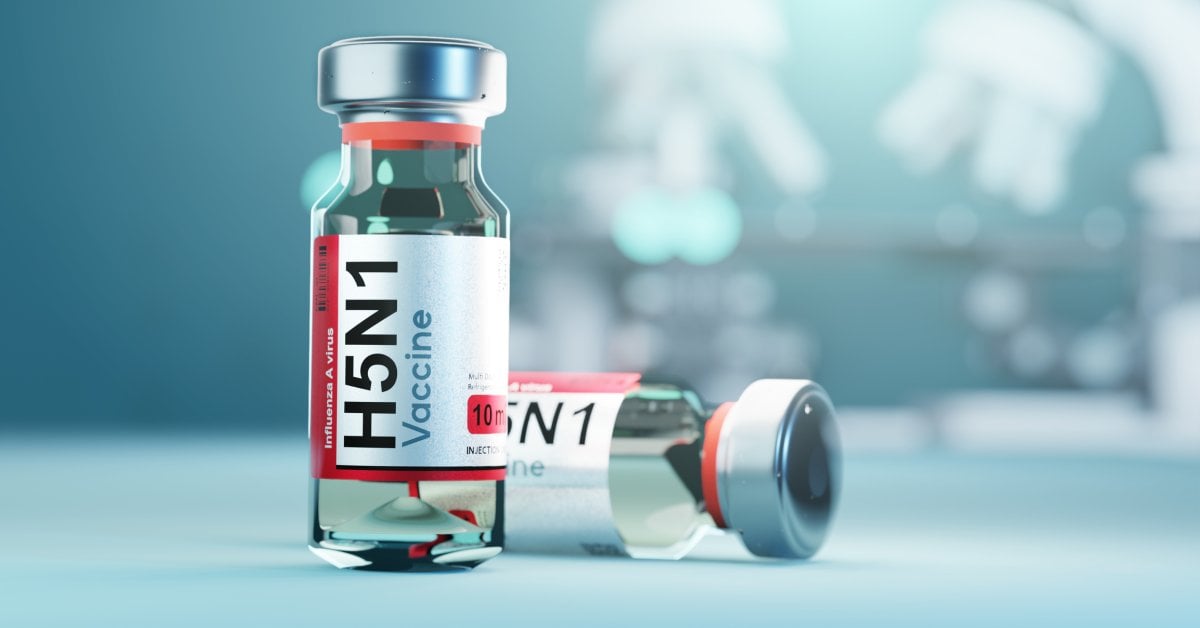
Flu is generally a health concern in the fall and winter, but this spring and summer, influenza—specifically avian influenza, or bird flu—is dominating headlines and weighing heavily on the minds of health experts.
H5N1 is infecting chickens in at least 48 U.S. states and cows in at least 12. So far, only three people—all dairy workers—have had recorded infections, but health officials are keeping a close eye on whether the virus is getting better at infecting humans. Preparing for that possibility includes readying a vaccine.
[time-brightcove not-tgx=”true”]Here’s what to know—along with if, and when, you might be recommended to get immunized.
Is there a vaccine for bird flu?
There are three. The U.S. Food and Drug Administration (FDA) has approved H5N1 vaccines made by Sanofi, GSK subsidiary ID Biomedical Corporation of Quebec (IDB), and CSL Seqirus—all of which also make seasonal flu vaccines.
Most of these are made using traditional flu-shot technology, which takes months. Manufacturers first grow the virus in chicken eggs or mammalian cells, then purify the virus and include them in the vaccine.
Sanofi received the first license in 2007 for an H5N1 shot, using chicken-egg manufacturing. IDB’s vaccine, approved for adults in 2013, is also egg-based and is the first against H5N1 to include an adjuvant, or an ingredient that generates a stronger immune response. CSL Seqirus’ shot also contains an adjuvant and was approved in 2020 for anyone 6 months or older. The company makes vaccines in two ways: by growing H5N1 in cells in its U.S. facility, and by growing it in eggs in its U.K. facility.
Read More: We Are Not Safe from Bird Flu Until We Protect Farmworkers
The approvals allowed all three companies to manufacture doses for the National Pre-Pandemic Influenza Vaccine Stockpile to have ready in case of a potential outbreak, but not to be sold for public use. The doses haven’t yet been made available and only will be if there are bird flu outbreaks in humans, and health officials determine people need to be vaccinated.
What’s in the stockpile?
The national stockpile now contains hundreds of thousands of doses of H5N1 vaccine—mostly from Seqirus—that could be deployed in a matter of weeks, according to a spokesperson for the Administration for Strategic Preparedness and Response (ASPR), the government organization that oversees preparedness for health emergencies. But the doses aren’t necessarily ready to ship: the stockpile is more like a warehouse of vaccine components targeting different strains of H5N1, rather than a storage facility for final shots.
Before the vaccines can be released, they need to go through the final stages of production known as “fill and finish,” and also receive an additional final clearance from the FDA. Working with authorities at the U.S. Centers for Disease Control and Prevention (CDC), the FDA, and the manufacturers, the team at ASPR constantly evaluates the makeup of the stockpile to make sure there are enough materials to produce vaccines against the currently circulating strain.
Read More: How to Stop Bird Flu From Becoming the Next Pandemic
The U.S. government recently ordered an additional 4.8 million doses of the company’s vaccine to include in the stockpile. According to spokesperson from the company, Seqirus plans to provide these during the summer in preparation for a potential outbreak in people.
How effective are existing vaccines?
It’s still unclear how effective they would be, since there haven’t been enough people infected with H5N1 to conduct proper studies on how well they would protect against illness. But studies in healthy people analyzing the immune responses generated by the vaccines suggest that the shots should provide sufficient protection against illness from the currently circulating strain. In addition, the specific strain causing the current outbreak could differ slightly from the ones in the vaccines.
How quickly can new batches be made?
Seqirus is prepared to deliver 150 million additional doses within six months; those doses will be made from existing raw materials that are currently part of the stockpile and ready to be processed into finished vaccines.
Are new vaccines being developed?
Because a traditional flu shot takes months to make, CDC director Dr. Mandy Cohen said that the agency is continuing to invest in new technologies, especially ones that will lead to faster production of doses. The goal is to “have the ability to scale up extremely quickly, and we want do that with an mRNA platform which allows for faster manufacturing,” she said at the Aspen Ideas: Health conference on June 21. During the COVID-19 pandemic, manufacturers were able to produce vaccines in about six-to-eight weeks using that technology, compared to the months it can take with egg- and cell-based platforms—and they continue to deliver in that short time frame when updating the shots to target new variants.
Read More: A New Bird Flu Death Is Making Experts Uneasy
Several academic institutions and pharmaceutical companies are working on an mRNA H5N1 vaccine. Pfizer and Moderna are both in the early phases of testing their candidates.
Should I get vaccinated against H5N1?
For now, you can’t, since all of the doses are contained in the national stockpile and have not been released. The CDC is monitoring the current outbreak in cattle and other mammals, as well as checking for H5N1 in wastewater to spot any signs that the virus is moving into people. If that occurs, health officials from various agencies are ready to release the necessary doses of vaccine from the stockpile.
The CDC’s vaccine committee is meeting June 26 to June 28 to discuss H5N1 and what, if any, guidance the agency should provide with respect to H5N1 vaccination plans. Even if they decide vaccination is warranted, it likely won’t immediately be for everyone. People at highest risk for bird flu exposure, such as dairy workers and health care workers, would probably be vaccinated first. Then those at high risk of complications from the flu, such as the elderly and those with weakened immune systems, might be next. Only if outbreaks become severe or widespread would other people be vaccinated as well.





























